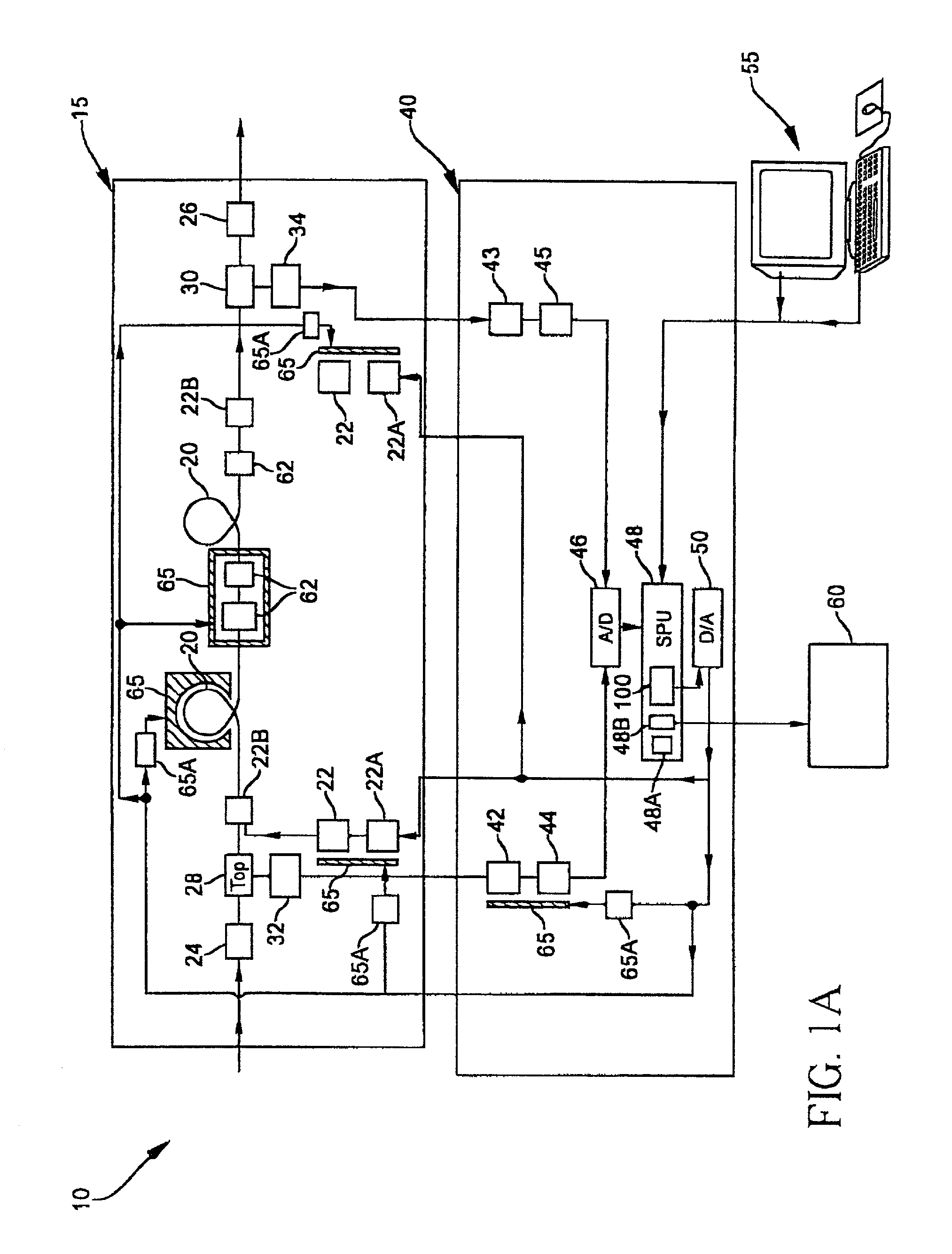Optical amplifiers with a simple gain/output control device
a control device and amplifier technology, applied in the field of optical fiber amplifiers, can solve the problems of low frequency modulation, wdm technology suffers from unwanted effects, and variation in output power, and achieves the effects of automatic suppression of power transients, minimizing the influence of amplifier ase noise, and fast control of amplifier gain or total output power
- Summary
- Abstract
- Description
- Claims
- Application Information
AI Technical Summary
Benefits of technology
Problems solved by technology
Method used
Image
Examples
Embodiment Construction
[0016] FIGS. 1A and 1B illustrate an embodiment of an improved optical fiber amplifier 10. This optical fiber amplifier 10 includes an optical system 15 comprised of an optical gain medium 20, for example a rare-earth doped fiber and at least one pump source 22, such as a laser diode, driven by a pump drive unit 22A coupled via a coupler 22B to the optical gain medium 20. The optical system further includes an input port 24 for an optical signal entering the gain medium 20, an output port 26 for an out-going signal and two optical taps 28 and 30. The tap 28 is an input optical signal tap 28 and is connected to a first optical detector 32. The tap 28 is located either downstream of the input port 24, but in front of the gain medium 20, or, alternatively, may form a part of an input port 24 or the coupler 22B. The tap 30 is an output optical signal tap and is connected to a second optical detector 34. The tap 30 is located downstream of the gain medium 20 in front of the output port 2...
PUM
 Login to View More
Login to View More Abstract
Description
Claims
Application Information
 Login to View More
Login to View More - R&D
- Intellectual Property
- Life Sciences
- Materials
- Tech Scout
- Unparalleled Data Quality
- Higher Quality Content
- 60% Fewer Hallucinations
Browse by: Latest US Patents, China's latest patents, Technical Efficacy Thesaurus, Application Domain, Technology Topic, Popular Technical Reports.
© 2025 PatSnap. All rights reserved.Legal|Privacy policy|Modern Slavery Act Transparency Statement|Sitemap|About US| Contact US: help@patsnap.com



